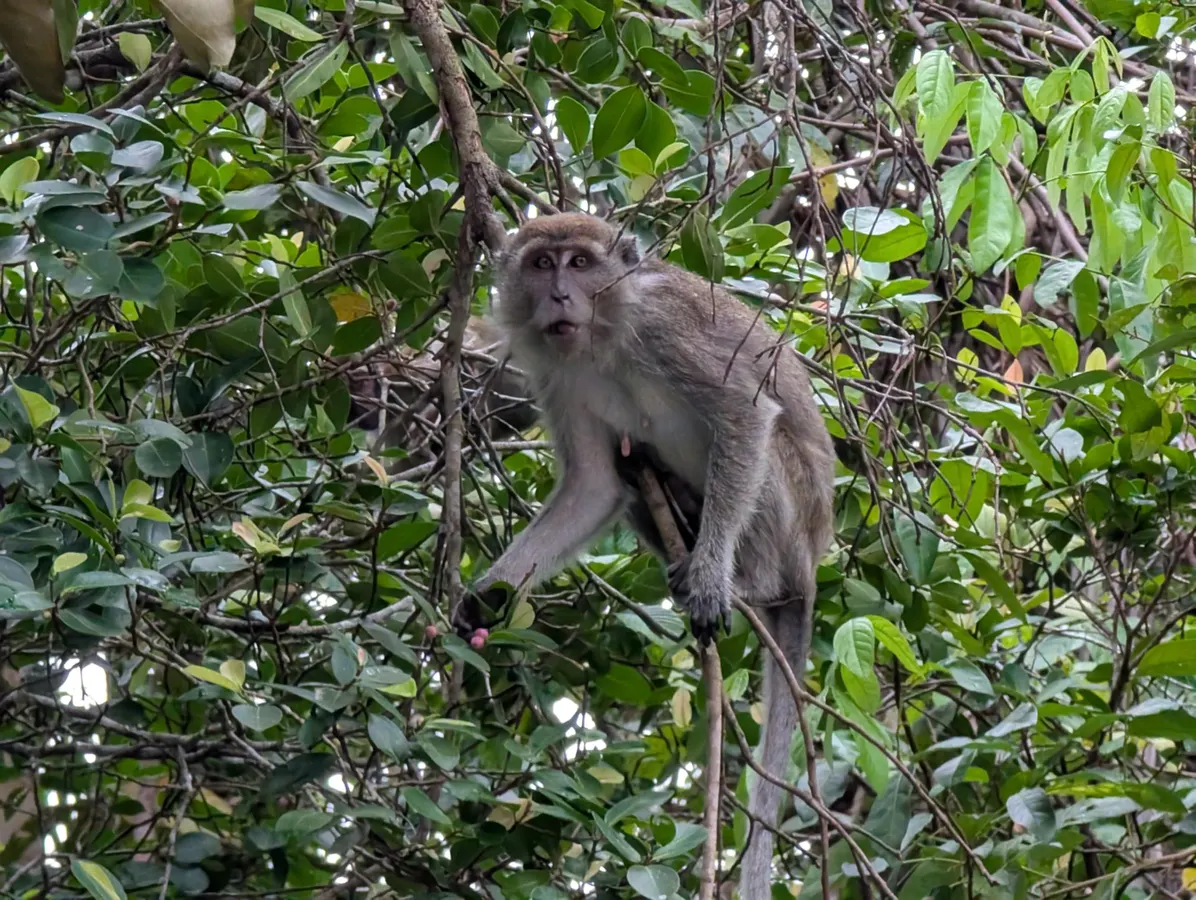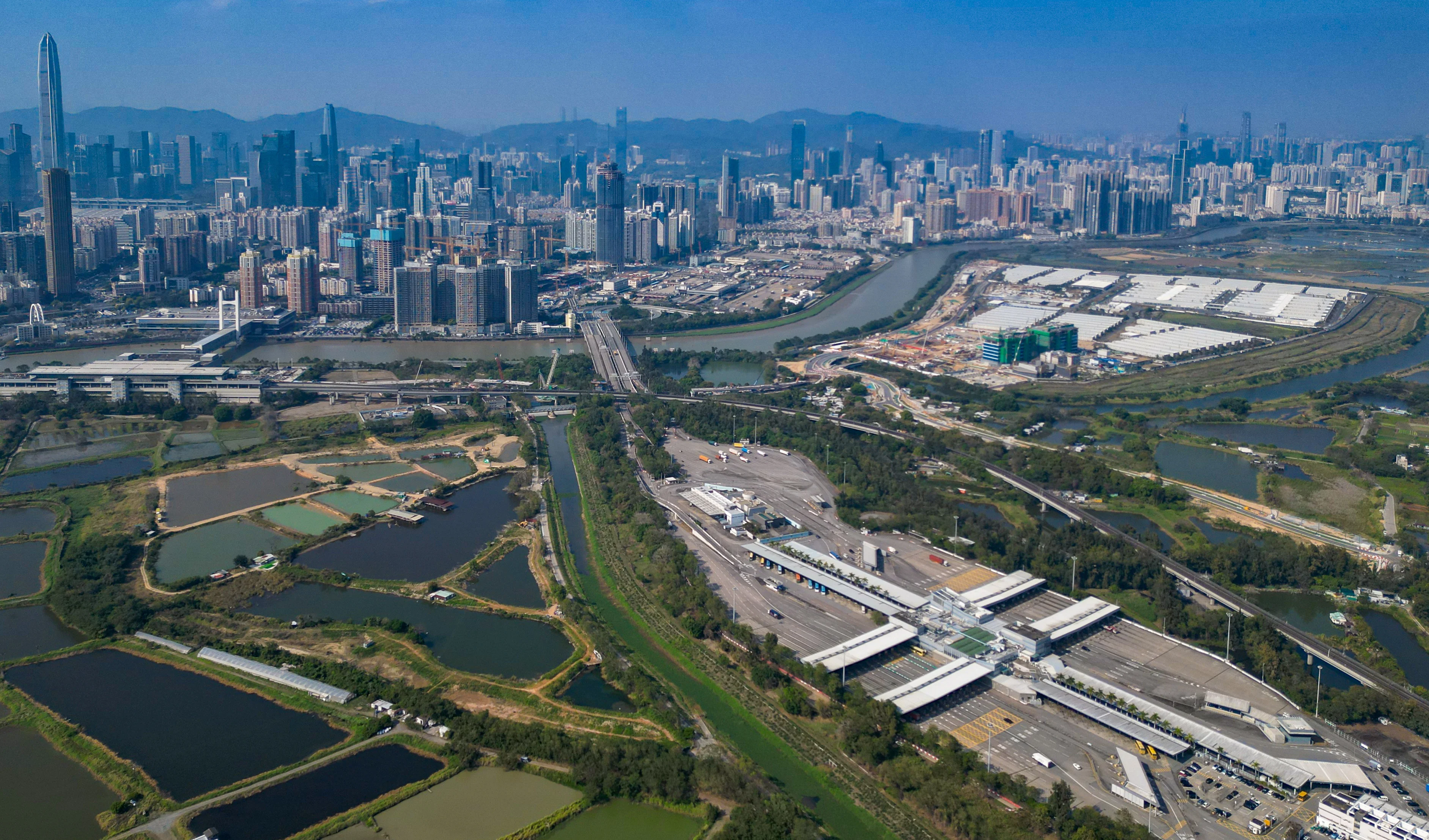By Christopher Elliott,Senior Contributor
Copyright forbes

A macaque stares at a visitor to the KLIAS Wetlands near Kota Kinabalu, Malaysia, a mangrove ecosystem teeming with wildlife, including proboscis monkeys and fireflies.
Aren Elliott
Kota Kinabalu is the kind of place that seems straight out of your imagination. Not far from the capital of the Malaysian state of Sabah, you can find proboscis monkeys swinging through ancient rainforests and giant clams the size of coffee tables lurking beneath turquoise waters.
The northern tip of Borneo aspires to become the world headquarters of ecotourism, and by most measures, it deserves to be. More than half of the land is still covered by rainforest. There are state parks with spectacular birds that attract visitors from every corner of the globe.
But in a place like Malaysia, there are as many obstacles as opportunities. Pollution, deforestation and mass tourism threaten the very thing that makes it so spectacular.
“We’re in a place where people can really appreciate nature,” says Khay Inn Poh, the marketing director for Amazing Borneo Tours. “But to continue appreciating Sabah, it has to also be sustainable.”
More than 2 million tourists a year flock to Kota Kinabalu — or KK, as the locals call it — drawn by idyllic landscapes: a green jungle shrouded in clouds, and above it all, the distinctive granite peak of Mount Kinabalu. Yet behind the Instagram snaps lies a tension. Can a region reliant on tourism protect the very ecosystems that make it irresistible?
Akbal Setia, the director of international promotion for Tourism Malaysia, says sustainability is easier said than done. It can’t be a series of conservation efforts implemented in a vacuum; they have to align with the values and needs of the people who live in Malaysia.
“Sustainability has to benefit the people,” he says. “Otherwise it won’t work.”
There’s a sense of urgency that in a time of climate change and rapid development, this part of Malaysia has just one chance to get it right.
“Borneo’s at a crossroads,” says conservation geneticist Benoit Goossens, who heads a nonprofit organization called Regrow Borneo, which is fighting deforestation. “We’re either going to save what’s left — or lose it all.”
Baby clams at the Marine Ecology Research Center (MERC). These mollusks can grow to the size of a coffee table.
Aren Elliott
What are the threats to sustainability in Kota Kinabalu?
Northern Borneo faces multiple threats to sustainable tourism.
Deforestation and habitat loss. Decades of logging and palm oil plantations have turned thousands of square miles of uninterrupted lush rainforests into fragmented patches. Elephants used to roam freely. Now they’re squeezed into corridors between plantations. Satellite data shows Sabah has lost 15 percent of its tree cover since 2000.
Pollution and waste management. At one luxury resort near KK, plastic bottles and food wrappers wash ashore after rainstorms. In KK, recycling programs are still developing, so coastal villages discard their trash into the ocean.
Unsustainable tourism practices. Budget tour operators prioritize cheap, high-volume trips from markets like China and South Korea. They’ll pack people into a bus or on a boat to see a sunset, but they do little to help the local community.
Illegal wildlife trade. Pangolins — scaly, ant-eating mammals — are trafficked for their scales (used in traditional Chinese medicine) and meat. Rare orchids, plucked from jungles, fetch thousands on black markets.
Benoit Goossens, who heads the nonprofit organization Regrow Borneo. The organization is dedicated to restoring ecosystems damaged by deforestation.
Aren Elliott
How is Kota Kinabalu becoming sustainable?
The sustainability initiatives in northern Borneo are as sprawling and diverse as the rainforests.
For example, Regrow Borneo isn’t just planting trees — it’s rebuilding ecosystems. Since 2020, the nonprofit has replanted 40,000 native trees in degraded palm oil areas.
“We work with locals,” explains Goossens. “They grow seedlings, plant them, and protect the sites for three years.”
Meanwhile, the Marine Ecology Research Center (MERC), a privately funded organization on the campus of Gayana Marine Resort, has bred over 3,500 giant clams — key to filtering water and supporting coral reefs. Clams play an important role in the Marine ecosystem, taking in harmful waste nutrients like ammonia and nitrate and expelling clean water into the environment.
“We’ve reintroduced seven species into the wild,” says Syazan Mohamed, a biologist at MERC. Tourists can even “adopt” a coral fragment for replanting.
Tour operators like Amazing Borneo are refusing to engage in checklist tourism.
“We don’t do rushed photo ops,” says Poh. “We take small groups to meet indigenous communities or replant mangroves.” Its website, Sabatravel.com, encourages travelers to offset flight emissions by funding reforestation.
At the Hyatt Centric, a new hotel in KK, the property separates waste (a rarity here) and uses recycled materials.
“We’re pushing suppliers to ditch single-use plastics,” says Ruben Schrijver, the hotel’s general manager.
The Hyatt has also partnered with Regrow Borneo to encourage visitors to donate and plant trees.
Near Kinabatangan River, villagers once reliant on logging now run eco-lodges. Tourism, if done correctly, can fund schools and clinics, steering visitors toward a more sustainable tourism experience.
A blowdart instructor at the Mari Mari cultural village in Kota Kinabalu, Malaysia, shares a lighthearted moment with a photographer. The village is part of the region’s sustainability efforts.
Aren Elliott
What’s the path forward for tourism in Borneo?
Progress is fragile in Kota Kinabalu, but hope persists. Younger Malaysians are demanding greener policies. Social media shames polluters and poachers. But travelers hold power too.
“Choose operators who hire locals,” says Goossens. “And avoid wildlife selfies.”
But can tourism sustain a region without destroying it?
Malaysian tourism officials believe the answer is yes. The region has doubled down on promoting ecotourism. It has introduced a National Ecotourism Plan dedicated to protecting and preserving its nature, culture and heritage.
The plan extends beyond KK. In Malaysia, there are several regions where ecotourism dominates. It includes Sarawak and Mulu National Park, with its caves and karst formations, and Belum Rainforest Resort in Perak, in northern Peninsular Malaysia.
“We’re not asking people to stop visiting,” says Mohamed, the MERC biologist. “We’re asking them to care.”
But how do you make someone care? That’s the challenge. With visitors making their booking decisions based on low prices and checklists rather than sustainability and environmental impact, it becomes a matter of education. In Malaysia, tourism officials seem to know that sustainability isn’t achieved in a year or two, but over generations.
“It’s a process,” admits Setia, the Malaysian tourism official. “But I believe we can preserve not just nature, but also the people.”
It requires a long-term commitment to changing the way people see themselves and their role in the tourism ecosystem. And that’s something Kota Kinabalu is still discovering.
Editorial StandardsReprints & Permissions



